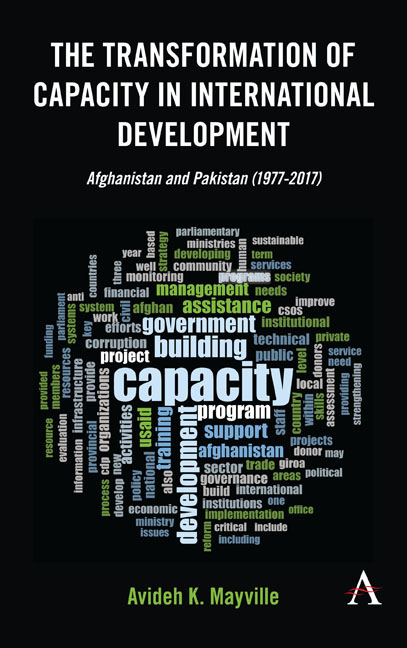Book contents
- Frontmatter
- Dedication
- Contents
- List of Figures
- Acknowledgments
- Chapter One Introduction
- Chapter Two Development Agendas and Donor Spaces: How Capacity Gained Salience
- Chapter Three Capacity in Development Policy and Practice: The Quest for Performance Excellence in the Governance of Disabling Environments
- Chapter Four Capacity and Fragility: The Sociological Framework for the Capacity Project and Developing “Fragile” States
- Chapter Five The Capacity Project in “AfPak”: Development Experiments, Subnational Spaces, and Transnational Networks
- Chapter Six The Battle for Power in Disabling Environments: Statecraft and Developing Capacity in Afghanistan and Pakistan
- Chapter Seven Developing Capacity to Manage Global Threats: Statemaking, the Militarization of Development, and Human Rights Approaches
- References
- Index
Chapter Six - The Battle for Power in Disabling Environments: Statecraft and Developing Capacity in Afghanistan and Pakistan
Published online by Cambridge University Press: 11 December 2019
- Frontmatter
- Dedication
- Contents
- List of Figures
- Acknowledgments
- Chapter One Introduction
- Chapter Two Development Agendas and Donor Spaces: How Capacity Gained Salience
- Chapter Three Capacity in Development Policy and Practice: The Quest for Performance Excellence in the Governance of Disabling Environments
- Chapter Four Capacity and Fragility: The Sociological Framework for the Capacity Project and Developing “Fragile” States
- Chapter Five The Capacity Project in “AfPak”: Development Experiments, Subnational Spaces, and Transnational Networks
- Chapter Six The Battle for Power in Disabling Environments: Statecraft and Developing Capacity in Afghanistan and Pakistan
- Chapter Seven Developing Capacity to Manage Global Threats: Statemaking, the Militarization of Development, and Human Rights Approaches
- References
- Index
Summary
The success of the Marshall Plan in reconstructing the war-ravaged infrastructure of Europe gave birth to an optimism about the ability of such programs to develop the untamed and unproductive areas of Africa, Asia, and Latin America. This optimism also provided a new challenge for (development) institutions… Worldwide frontiers offered these institutions both a chance to flex and build their technical muscles as well as a rationale for institutional survival. Thus, the development industry was born.— A DAI evaluation on the role of capacity building in development administration for integrated rural development projects (Honadle 1981, 2)
The history of international development of Afghanistan and Pakistan yields important lessons for the future of aid. Development assistance to both countries has been defined by geopolitical dynamics and Western attempts to contain global and transnational threats. This foreign policy strategy has yielded forms of bilateral assistance that integrates military strategy with development strategy, culminating in the emergence of new forms of multilateral military – development planning schemes to build the state. At the same time, the global agenda for aid calls for the integration of human rights into development agendas, prompting development agencies and institutions to establish strategies to advance human rights as a development objective. Within this context, capacity development has emerged as a cornerstone of global development strategy. In the previous chapter, I placed the progression of international development within the context of the political and economic reality of insurgency and transnational militancy in Afghanistan and Pakistan, tracing the evolution of transnational networks of resistance alongside the integration of development and military strategy.
I trace the transformation of the security– development nexus from a conflation of economic assistance and military aid as a single bilateral assistance package to Pakistan in the 1980s to contain the Soviet threat from Afghanistan and maintain a US presence in the region to the present-day integration of military and development assistance through counterinsurgency strategy and the innovation of PRTs in Afghanistan. I distinguish between the various forms of the security– development nexus as combining military and development aid as:
Bilateral assistance packages.
Engaging state military, police, or local militias in order to provide security for the implementation of development projects in remote (subnational) territory.
The strategic integration of foreign/ international military forces and development objectives, in particular through the US post-2001 counterinsurgency strategy and the emergence of PRTs.
- Type
- Chapter
- Information
- The Transformation of Capacity in International DevelopmentAfghanistan and Pakistan (1977–2017), pp. 151 - 190Publisher: Anthem PressPrint publication year: 2019



